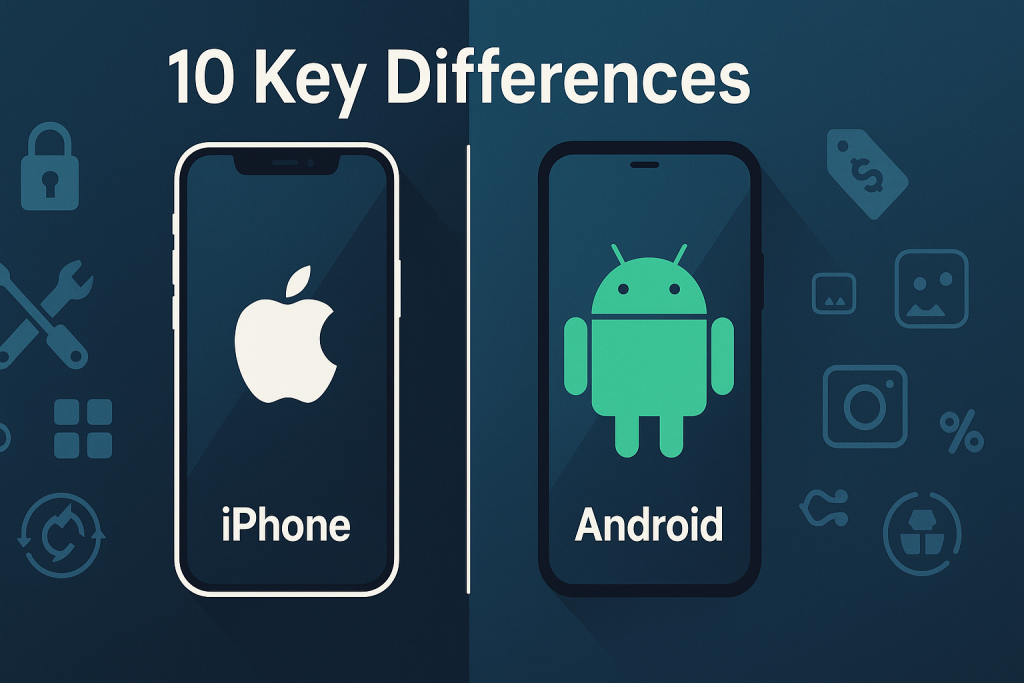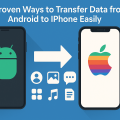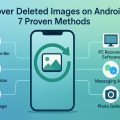Introduction: Understanding the iPhone vs Android Debate
Choosing between an iPhone and an Android device is one of the most significant decisions for modern smartphone users. With millions of people worldwide loyal to either Apple or Android, the rivalry is fierce and ongoing. But what precisely sets these two mobile giants apart? In this comprehensive comparison, we’ll explore the top 10 differences between iPhone and Android, helping you make an informed decision based on your personal preferences, needs, and budget.
Whether you’re a tech enthusiast, a casual user, or someone looking to buy your first smartphone, understanding the key distinctions between iOS and Android will empower you to choose the device that best fits your lifestyle. Let’s dive into the essential differences and discover which platform excels in the areas that matter most to you.
1. Operating System: iOS vs Android
Exclusive Platforms
The primary difference between iPhone and Android starts with their operating systems. Apple’s iPhone runs on iOS, a proprietary operating system exclusive to Apple devices. Android, on the other hand, is an open-source operating system developed by Google, used by a wide range of smartphone manufacturers such as Samsung, Google Pixel, OnePlus, and Xiaomi.
User Experience and Updates
iOS is praised for its smooth, consistent user experience, regular software updates, and high security. Apple rolls out updates simultaneously to all compatible devices worldwide. In contrast, Android offers more flexibility and customization but suffers from fragmentation—different manufacturers and models may receive updates at different times, or sometimes not at all.
For users who prioritize timely updates and a uniform experience, iPhone may be a preferred choice. For those who value flexibility and variety, Android offers a compelling alternative.
2. Hardware Variety and Build Quality
Apple’s Closed Ecosystem
Apple controls the entire production cycle of the iPhone, from hardware to software. This tight integration ensures high build quality and a streamlined user experience. iPhones are often recognized for their premium materials, elegant design, and robust construction.
Android’s Wide Range of Choices
Android stands out for the vast hardware variety it offers. Dozens of manufacturers produce Android devices, resulting in a wide spectrum of designs, specifications, price points, and features. From flagship models like the Samsung Galaxy S series to budget-friendly options, there’s an Android device for virtually every user.
This diversity allows Android users to select devices based on preferred size, camera specifications, battery life, and more, while iPhone users have fewer model options to choose from annually.
3. Customization and Personalization
Android: Unmatched Flexibility
One of Android’s hallmark features is its unparalleled customization options. Users can extensively tweak the interface, change default apps, use custom launchers, and even install widgets anywhere on the home screen. Advanced users can further customize their Android phones with ROMs and root access.
iPhone: Streamlined Simplicity
iOS offers a more controlled environment with limited customization. While recent iOS updates have introduced widgets and some flexibility, iPhones still prioritize consistency and simplicity. This approach appeals to users who prefer a device that “just works” out of the box, with minimal setup.
If you love personalizing your device and making it truly yours, Android is the clear winner. For those who favor a simple, straightforward interface, iPhone shines.
4. App Availability and Quality
App Stores: Apple App Store vs Google Play
Both iPhone and Android offer millions of apps through their respective app stores—Apple’s App Store and the Google Play Store. However, the process for app approval and quality control differs significantly.
Quality and Early Access
Apple is known for its strict app review process, which often results in higher-quality, more secure apps. Many developers choose to launch their applications on iOS first due to the platform’s lucrative user base and standardized hardware, meaning iPhone users frequently enjoy early access to new apps.
Android’s open environment means more apps overall, including a range of experimental and niche applications. However, this approach can also result in more low-quality or malicious apps slipping through the cracks.
5. Integration with Other Devices and Ecosystem
Apple Ecosystem: Seamless Connectivity
One of the iPhone’s biggest advantages is its integration with other Apple products, such as Macs, iPads, Apple Watch, and AirPods. Features like AirDrop, Handoff, and Universal Clipboard create a seamless experience across devices. For users already invested in the Apple ecosystem, the iPhone offers unmatched convenience.
Android Ecosystem: Flexibility with Limitations
Android, while offering some integration with Google’s ecosystem (Chromebooks, Wear OS watches, etc.), is generally less cohesive than Apple’s tightly-knit network. However, Android excels at integrating with a broad range of third-party devices and services, providing greater versatility for users with mixed-brand tech setups.
6. Security and Privacy Features
iPhone: Built-In Security and Control
Apple has a strong reputation for prioritizing user security and privacy. Features such as Face ID, regular security updates, and on-device data processing are designed to protect personal information. Apple’s strict app policies also help minimize malware risk.
Android: Growing Security Measures
Android has made significant strides in security, introducing features like Google Play Protect and frequent security patches. However, due to the diversity of manufacturers and the open-source nature of the platform, Android devices can be more vulnerable to security risks, especially if updates are delayed.
For users who prioritize privacy, iPhone often comes out on top. However, Android’s flexibility allows for more advanced users to implement their own security measures.
7. Pricing and Affordability
iPhone: Premium Pricing
iPhones are typically positioned as premium devices, with pricing that reflects their status. Each year, Apple releases several models, with the latest flagships usually bearing a high price tag. However, Apple also offers older iPhone models at reduced prices and more affordable options like the iPhone SE.
Android: Options for Every Budget
Android dominates the market with its spectrum of price points, from affordable entry-level smartphones to ultra-premium flagships. This makes Android devices accessible to a broader range of users, regardless of budget.
- Flagship Android phones rival iPhone prices
- Mid-range and budget Android phones offer excellent value
- Refurbished and older models provide additional savings
If affordability is a key factor, Android’s variety is unrivaled.
8. Camera Quality and Features
iPhone: Consistent Excellence
Apple has built a reputation for excellent camera performance. iPhones consistently deliver high-quality photos and videos, with advanced features like Smart HDR, Deep Fusion, and ProRAW. The camera experience is designed to be simple and reliable, even for non-experts.
Android: Innovation and Versatility
Android offers a wide range of camera experiences, from top-of-the-line shooters like the Samsung Galaxy Ultra and Google Pixel to budget models with basic features. Many Android phones lead in innovation, offering periscope zoom, ultra-wide lenses, and AI enhancements.
For photography enthusiasts seeking cutting-edge features, Android’s diversity is hard to beat, but iPhone remains a go-to for reliable quality across the board.
9. Voice Assistants and Smart Features
Siri vs Google Assistant
Siri, Apple’s voice assistant, is deeply integrated into iOS and the wider Apple ecosystem, offering hands-free control, personalized suggestions, and smart home integration.
Google Assistant’s Smart Edge
Many users consider Google Assistant to be smarter and more versatile. It excels at search, context awareness, and integration with a wide range of smart devices. Some Android smartphones also support Amazon Alexa and other third-party assistants, providing even more choices.
10. Customer Support and Software Updates
Apple: Renowned Service and Updates
Apple is famous for its customer support, with in-person service at Apple Stores and comprehensive online resources. iPhones receive regular software updates for several years, often longer than their Android counterparts.
Android: Varies by Manufacturer
Customer support and software update policies vary significantly among Android manufacturers. Google, Samsung, and a few others offer robust update support, but many devices may only receive updates for two to three years or not at all. Before purchasing, it’s worth checking a manufacturer’s track record.
Conclusion: Which is Best for You?
The choice between iPhone and Android ultimately comes down to your individual preferences, needs, and priorities. If you value a tightly integrated ecosystem, timely updates, and premium build quality, an iPhone may be the best fit. If you want freedom to customize, a broader range of hardware options, and better affordability, Android is a compelling option.
- Choose iPhone if: You want seamless Apple ecosystem integration, superior security, regular updates, and high resale value.
- Choose Android if: You desire more choices, customization, price flexibility, and advanced innovation.
Consider your tech habits, your existing devices, and your must-have features. By understanding these 10 key differences, you can confidently select the smartphone that will serve you best for years to come.


